A post-tensioned stone frame by engineering firm Webb Yates is among the exhibits in the architecture rooms of this year’s Royal Academy of Arts summer exhibition, curated by London studio Assemble.
Webb Yates worked with The Stonemasonry Company to create a frame made from cored cylinders of waste limestone joined together with tensioned steel rods, aiming to showcase stone as a modern, low-carbon structural material.
It is one of the many pieces displayed at the annual Royal Academy of Arts summer exhibition, which is open until 18 August, and is part of the architecture section curated by Assemble around the theme “spaces for making”.
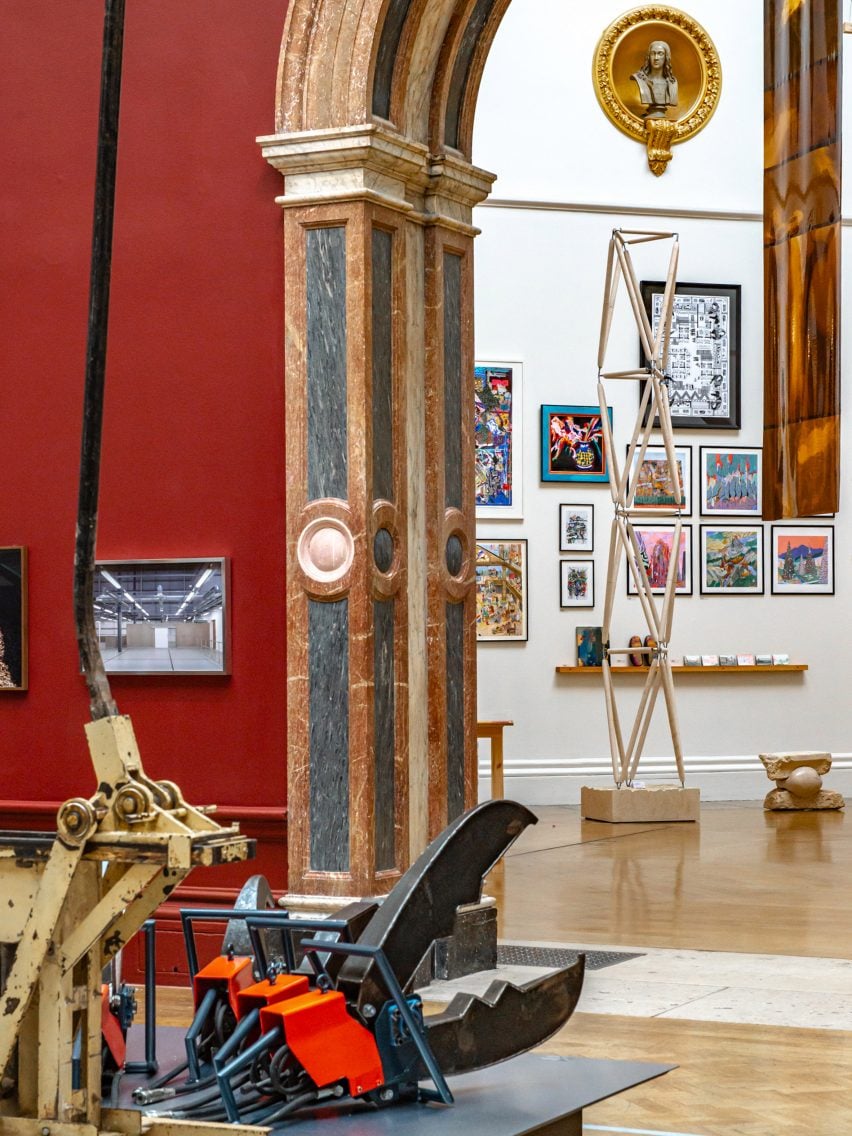
“Webb Yates and The Stonemasonry Company have been advocating a return to stone structure to reduce carbon and pollution,” Webb Yates cofounder Steve Webb told Dezeen.
“Many people construe this as a suggestion to return to the massive stone structures of the past but we want to reimagine how stone can be used by modern engineers and stone masons.”
“The pylon demonstrates how post-tensioning slim stone elements can achieve strength and rigidity at a fraction of the carbon cost,” he continued.
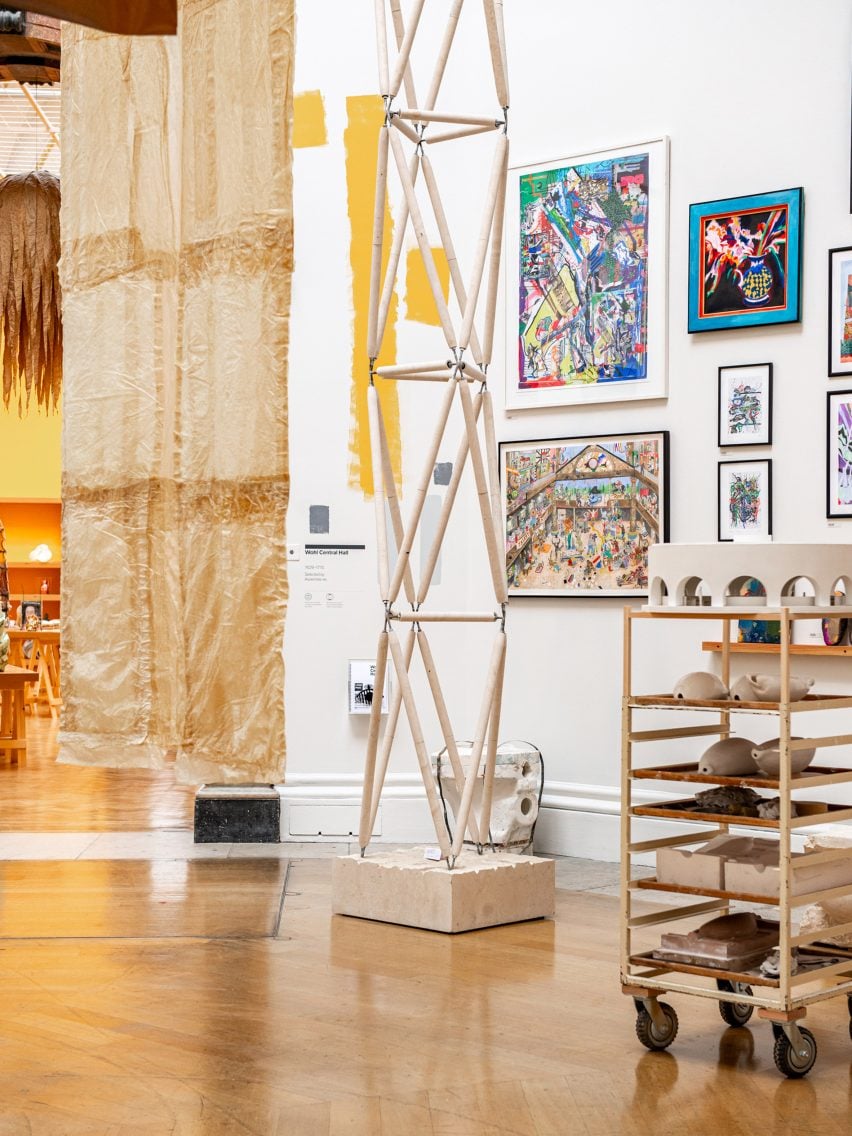
Displayed in the octagonal central hall at The Royal Academy of Arts, the stone structure is imagined as an alternative to building with steel, Webb explained.
“Imagine crane masts, bridges or space frames like the Eden Centre and Stadium Australia being formed with stone elements instead of steel,” he said.
“With a world-saving 75 per cent carbon reduction, inherent durability and fire resistance, we can put waste stone to use and make some really pretty structures.”
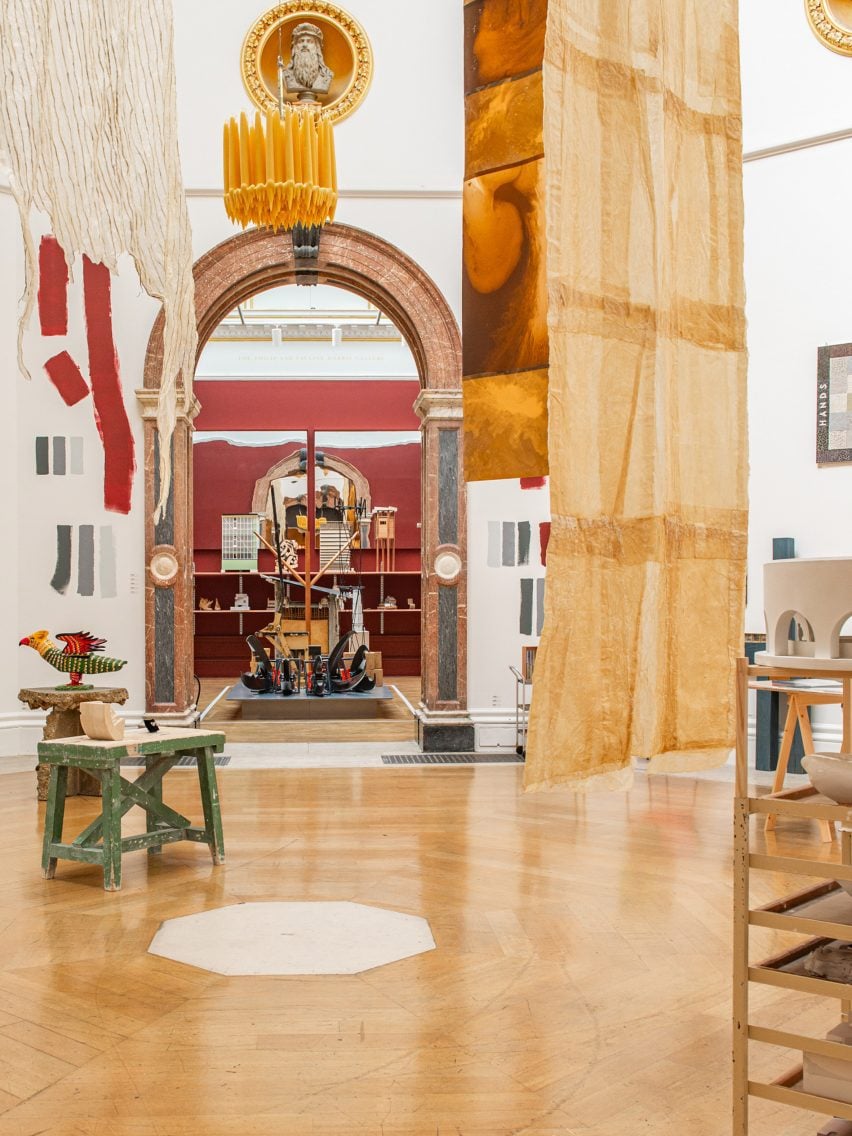
The stone structure is displayed alongside architectural models, material samples, drawings and photographs in the architecture rooms – a regular feature at the annual summer exhibition, which also showcases various mediums of art.
Other stone pieces in the show included a model of Artefact’s Brick from Stone installation and a column segment designed by Palestinian architects AAU Anastas, which is made up of a bulging piece of stone sandwiched between two stone fragments taken from a demolished building in Bethlehem.
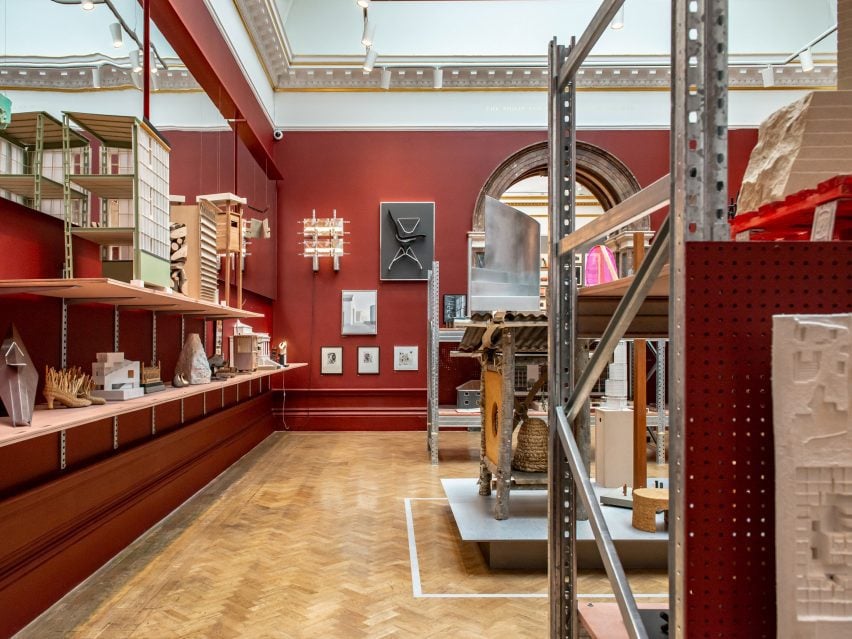
Assemble, which was elected a member of the Royal Academy of Arts in 2022, arranged the architecture exhibit across two rooms.
Aiming to reflect the profession’s working processes, the central hall is curated as a studio-like display of works and the adjacent gallery is designed to appear like an architectural storage space, with exhibition pieces displayed on industrial shelving.
“We wanted to approach the two rooms slightly differently and show architecture in the space that it’s usually made,” Assemble’s Kaye Song told Dezeen.
“We’re used to seeing architecture models and drawings presented in such a pristine way but that’s not usually the context you view finished architecture works,” Song added.
“One gallery we’ve turned into an industrial storage-like space using off-the-shelf products like palette racking and wall-mounted brackets, and the other room has taken an artist’s studio approach.”
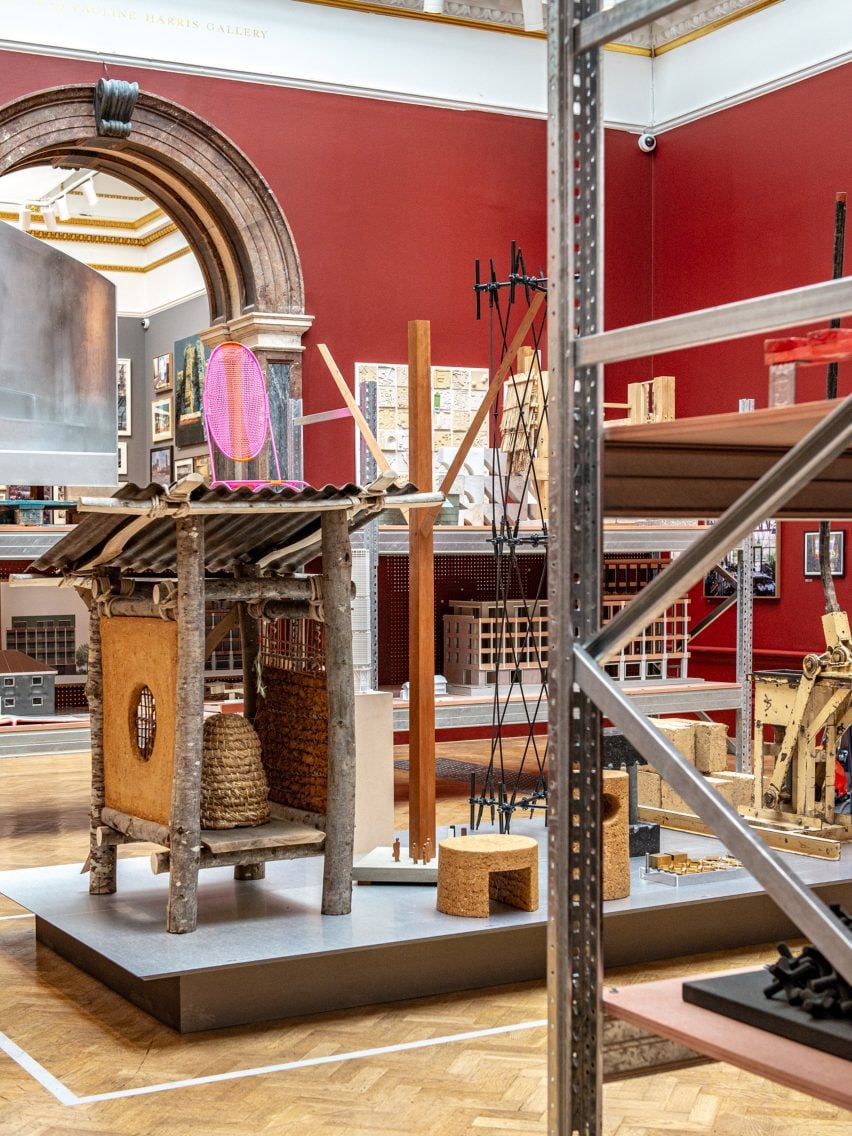
Hanging from a skylight in the central hall are sheets made of biomaterials by artists Jessie French and Shanelle Ueyama. Surrounding them are mosaic panels by volunteers at the Hackney Mosaic Project and a glass sculpture by designer Yinka Ilori.
In the adjacent room on the industrial shelving, which will be reused elsewhere after the exhibition closes, is a set of tools by sculptor James Capper, architecture models and casts by architecture studio Stanton Williams and rammed-earth stools by ceramic artist Lyson Marchessault.
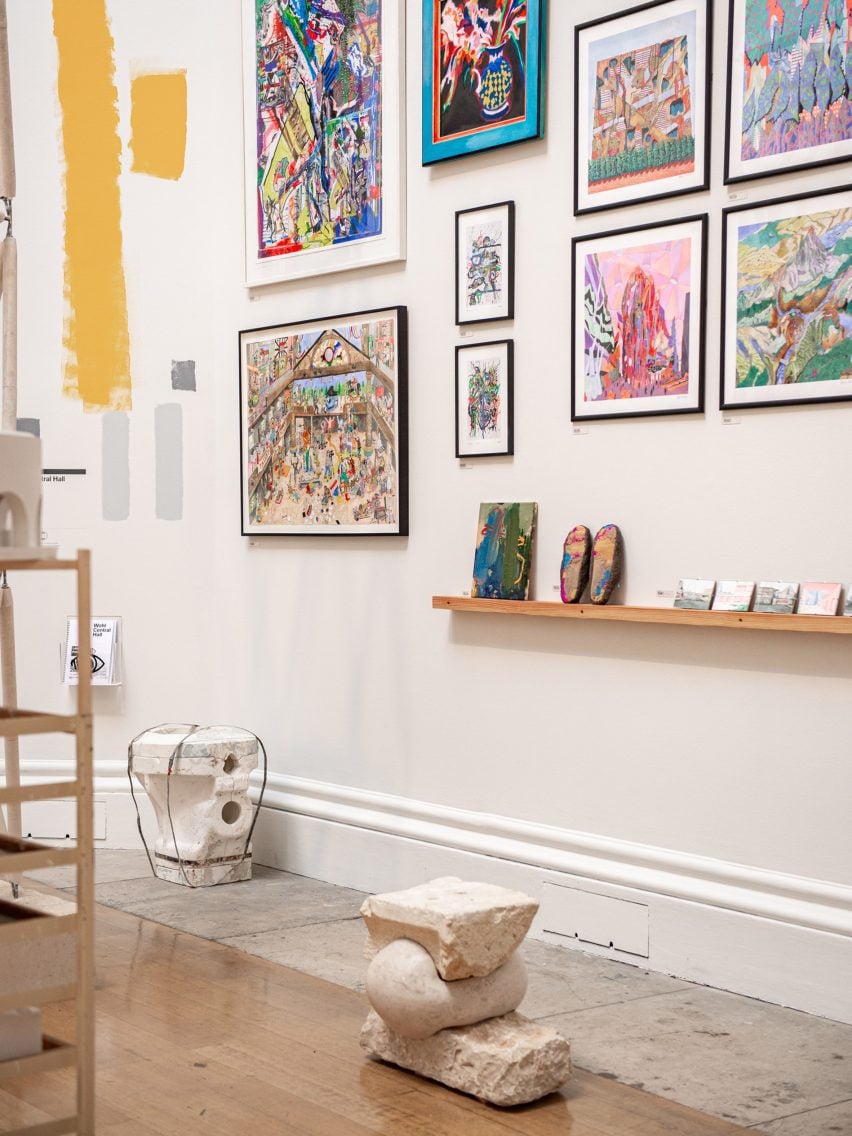
Assemble founding member Maria Lisogorskaya explained that a wide range of designs from different types of makers, not just architects, were chosen to create an engaging exhibition.
“We wanted to showcase the breadth of the profession with models, tools, material samples and community projects, not just individual projects,” said Lisogorskaya.
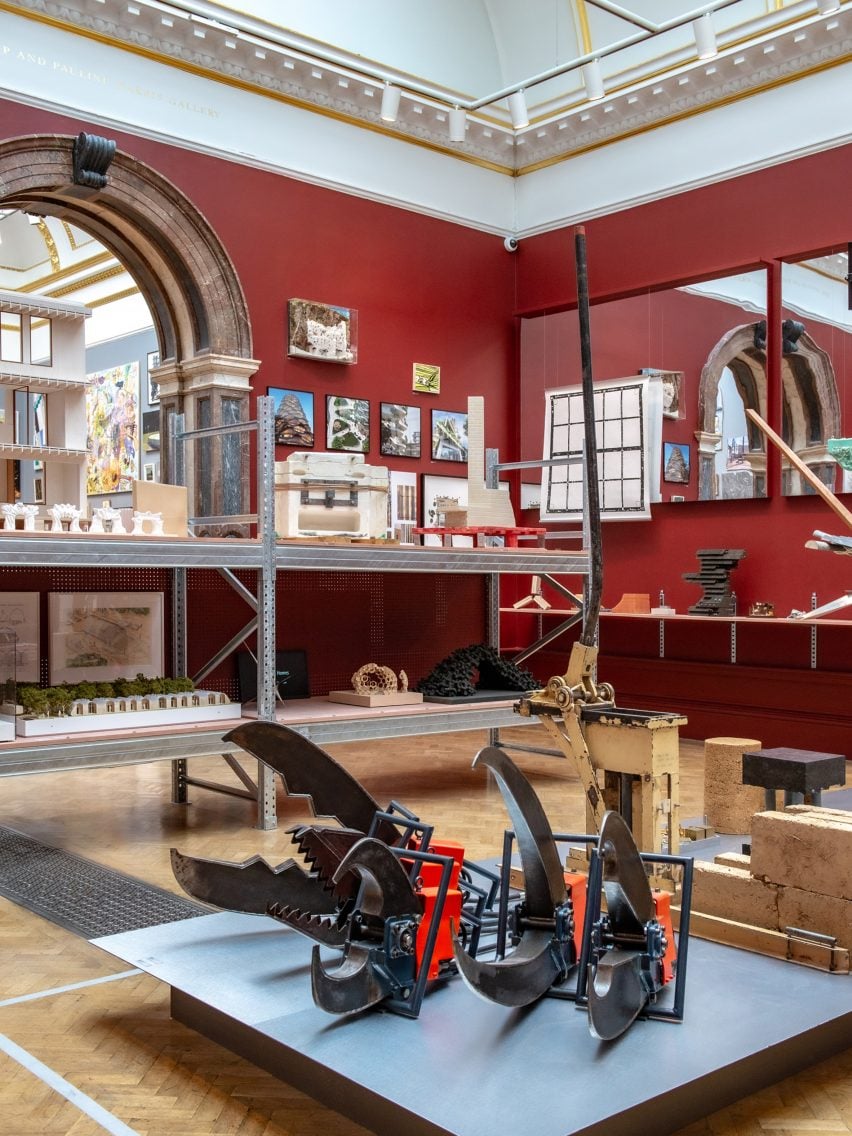
“There’s a range of people; there’s architects, product designers, structural engineers, fashion designers, musicians, scientists, community organisations,” Lisogorskaya continued.
“We wanted to have a really broad net of people together under one roof to make for a more dynamic show.”
Also taking place is the London Festival of Architecture, for which an eclectic range of benches has been installed on the Royal Docks and Unknown Works has constructed The Armadillo pavilion from eucalyptus wood.
The photography is by Kaye Song.
The Royal Academy of Arts summer exhibition takes place from 18 June to 18 August 2024 at Burlington House in London. See Dezeen Events Guide for an up-to-date list of architecture and design events taking place around the world.
